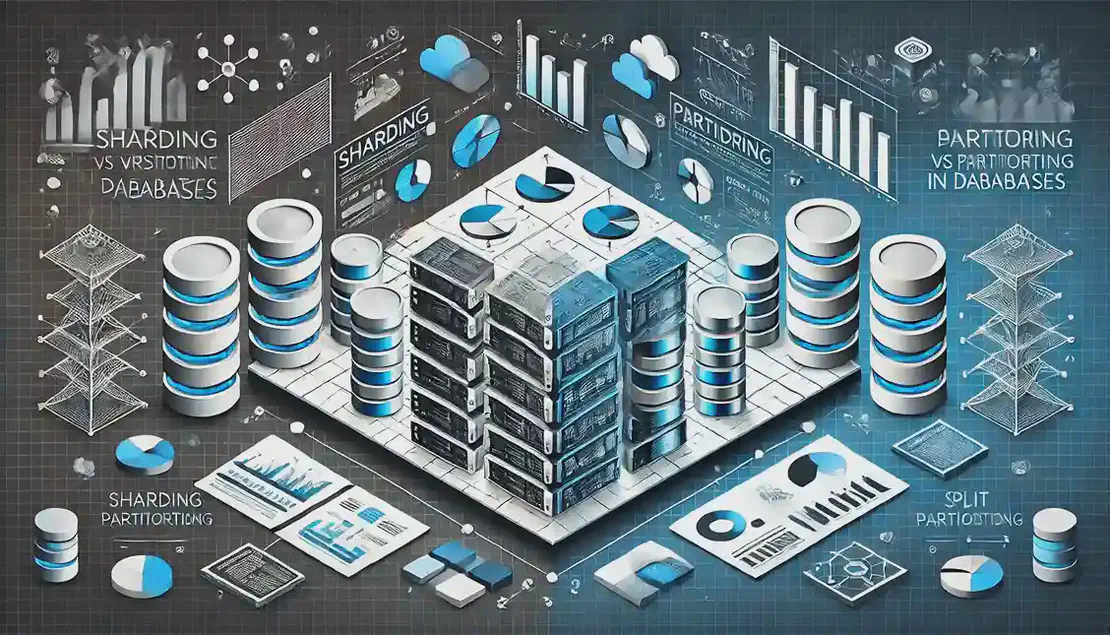
Understanding Database Partitioning
🔍 Definition — Database partitioning is a technique used to divide a large dataset into smaller, more manageable pieces called partitions. This helps improve the performance and scalability of the database system.
Read More
Sharding vs Partitioning in Databases
🔍 Definition — Sharding is a type of database partitioning that involves distributing data across multiple servers, while partitioning generally refers to dividing data within a single database instance.
Read More
12 Factor App Principles Explained
📜 Codebase — Maintain a single codebase tracked in version control, with multiple deployments. This ensures consistency across environments and simplifies the management of different application versions.
Read More
Consistent Hashing in System Design
🔄 Definition — Consistent hashing is a distributed hashing technique used to distribute data across multiple nodes in a network, minimizing the need for data redistribution when nodes are added or removed.
Read More
Types of Load Balancing Algorithms
🔄 Load Balancing Algorithm — A load balancing algorithm is a set of predefined rules used by a load balancer to distribute network traffic between servers, ensuring no single server becomes overloaded.
Read More
Kubernetes Architecture Explained
🔧 Control Plane — The control plane manages the overall state of the Kubernetes cluster. It includes components like kube-apiserver, etcd, kube-scheduler, and kube-controller-manager, which handle tasks such as API management, data storage, scheduling, and running controller processes.
Read More
Timeout Pattern in Microservices
⏳ Timeout Pattern — The timeout pattern in microservices is a design strategy used to handle delays and failures in service communication by setting a maximum wait time for responses.
Read More
Service Discovery in Microservices
🔍 Definition — Service discovery is a mechanism that allows microservices to locate and communicate with each other within a distributed system. It is essential for managing the dynamic nature of microservices environments.
Read More
Service Mesh: Managing Microservices Communication
🔍 Definition — A service mesh is an infrastructure layer that manages communication between microservices in a distributed system, providing tools for traffic management, security, and observability.
Read More
Implementing the Retry Pattern in Microservices
🔄 Definition — The Retry Pattern is a design strategy used in microservices to handle transient failures by automatically retrying failed requests.
Read More
Understanding Database Sharding
Understanding Database Sharding
🔍 Definition — Database sharding is a method of distributing a large database across multiple machines to improve performance and scalability.
Read More
Implementing JWT for Secure API Communication
🔐 API Security Importance — API security is crucial due to the increasing number of APIs and their exposure as attack vectors. APIs are often publicly exposed, making them attractive targets for cyberattacks.
Read More
Role of API Gateways in Microservices Architecture
🔗 Centralized Entry Point — API gateways serve as a centralized entry point for all client requests in a microservices architecture, managing and routing these requests to the appropriate microservice.
Read More
Understanding Zero Downtime Deployments
🔄 Definition — Zero downtime deployment (ZDD) is a method of updating software without causing any service interruptions or downtime for users.
Read More
Understanding Idempotency in APIs
🔄 Definition — Idempotency in APIs refers to the property where performing the same operation multiple times results in the same outcome as performing it once.
Read More
Understanding API Rate Limiting
🔍 Definition — API rate limiting is a technique used to control the number of requests a user or application can make to an API within a specific timeframe. It ensures that APIs handle traffic efficiently without being overwhelmed.
Read More
Choosing Between Microservices and Monolithic Architecture
🔍 Definition — Monolithic architecture is a traditional software model where the entire application is built as a single, indivisible unit. Microservices architecture, on the other hand, breaks down the application into smaller, independent services that can be developed, deployed, and scaled independently.
Read More